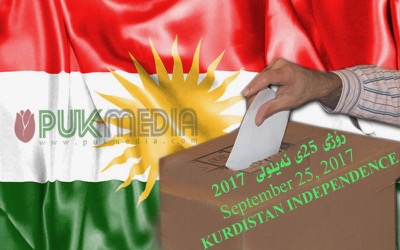
According to pledges made by the President of the region of the Iraqi Kurdistan, a referendum will take place on Monday 25 September 2017. The issue: the independence of a State called “Kurdistan”,
This “Kurdistan” would include both the region of the Iraqi Kurdistan and the territories that it annexed, working in collaboration with Daesh; the territories from which it had driven out most of the non-Kurdish populations so that today, the Kurds are in the majority.
At the time of the fall of the Ottoman Empire, the United States would have considered these regions as being able to opt into forming part of the Kurdistan, that it (the U.S.), had declared by the Treaty of Sèvres (1920), then disintegrated by the Conference of Lausanne (1923). According to the King-Craine Commission, the populations of what is now the region of the Iraqi Kurdistan and the annexed territories had only Kurdish minorities.
The Iraqi voters will be called to answer the following question: “Do you want the Region of Kurdistan and the areas of Kurdistan that fall outside the jurisdiction of the Region to become an independent state?”.
Those eligible to vote in this referendum will be the existing populations of the region of Iraqi Kurdistan and those in the annexed territories (but not the other Iraqis) if they fulfil the following conditions:
– they are over 18;
– they were registered on the electoral registers before 7 September; and
– for people originating from the regions concerned but living abroad, they are registered on the registers for electronic voting.
President Barzani is committed to ensuring that the press and his party do not accuse him of “betraying” the citizens that desire to remain part of Iraq.
The previous elections in the region of Iraqi Kurdistan and the elections for the current president of this region do not conform to the internationally accepted benchmarks for democracy.
- Thus, in 1992, voters totalled 971,953; but about ten years later, in 2014, the number had suddenly jumped to 2,129, 846.
– In 1991, after the international intervention against Iraq’s invasion of Kuwait, the United States and the United Kingdom occupied the region of the Iraqi Kurdistan. A coalition government was formed by Massoud Barzani (pro-West) on the one hand and Jalal Talabani (pro-Iran) on the other. Next: Barzani requested President Saddam Hussein to fight the Taliban in the occupied territory. This President Hussein did, under the careful watch of the Anglo-Saxons. Finally, in 1998 a peace agreement was concluded in Washington. Under this peace accord, the region was divided into two parts. After the invasion of Iraq in 2003, and the toppling of President Hussein, the West put Massoud Barzani in place as President (a decision not even ratified by an election) over the entire region on the condition that he finds a place in his government for Jalal Talabani. Barzani was finally elected President in June 2005 then re-elected in June 2010. His mandate ran out in June 2015 but he still remains in power (in fact he has been in power for 26 years without a break).
– Parliament, which can challenge the failure to hold a presidential election, is no longer assembled.
The Electoral Commission will have to take selective account of the votes of the annexed zones:
– If the majority of their “voters” vote “yes”, then they will be integrated into the new Independent state;
– if they vote “no”, they will remain attached to Iraq. However, their votes will be segregated from all the other votes counted. This will enable the voters in what currently comprises the region of Iraqi Kurdistan, to come to independence.
As early as 2004, the plan to establish a Kurdistan in Iraq had been laid out by the US Senator (and vice president to be) Joe Biden. This plan is officially supported by only one state: Israel.

















Stay In Touch
Follow us on social networks
Subscribe to weekly newsletter